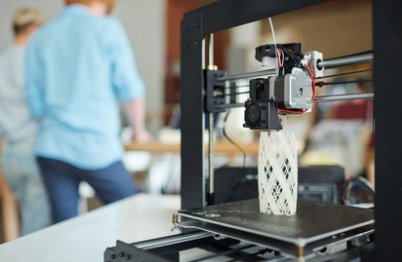
Drawing is a skill that requires a great deal of technical knowledge. To get the best results, they must be able and willing to collaborate with others. They may also need help understanding how to read engineering plans, and how software programs work. They might also need an understanding of engineering formulas that can be used to calculate measurement.
Drafters usually work for engineering and architecture firms. They are responsible for creating plans for buildings, structures, as well as other products, using computer-aided engineering (CAD) software. These professionals often work independently on projects, but they also work in teams to produce innovative designs. These professionals often work full-time but can also do a variety jobs. It depends on which company they work for they might have to work overtime in order to meet deadlines.
Drafters typically obtain an associate's degree in drafting from a community college or a technical institute. They can then continue their education with a 4-year program at a university. Depending on the course they take, they may be able to transfer their degree to a bachelor's degree.

In addition to a drafting degree, drafters may also need to have professional experience. In order to gain real-world experience, they may be required to do an internship at a company. This can be a great way to land a job as a drafter. They may also be asked to submit a portfolio in order to demonstrate their drafting skills.
Drafters can also gain certifications. American Design Drafting Association has certification exams that measure drafting skills. These tests test your tolerance for geometric designs. Many certifications last for three years. Candidates must pass current exams. The ADDA provides certification in many areas of drafting.
Drafters are typically employed by engineering, manufacturing, and construction companies. They might also be employed in factories or with electricity. Although they might work on a schedule, some drafters may work for more than 40 hours per week. They should also know how to manage their time and use computer-aided design (CAD).
Drafters can profit from the growing use of technology in order to increase their efficiency. They may need to understand CAD and other software programs, and stay current on building codes to remain competitive. Those who are interested in becoming a drafter may want to consider earning a master's degree. When it comes down to getting hired, people with master's degrees will be able to stand out from the rest. They will also be better qualified to present technical information for clients.

Drafters may also be able to work as an assistant for professional drafters. They may also volunteer to work on community projects to gain experience. Before you register for classes, decide what type of project is most important to you. Some clients prefer to draw in pencil, while others prefer to use computer-generated drawings.
Draft technicians can gain practical experience after graduating high school. They can enroll in drafting classes at technical institutes to get professional experience. They should pay particular attention to math and computer classes.
FAQ
Can some manufacturing processes be automated?
Yes! Yes. Automation has been around since ancient time. The Egyptians discovered the wheel thousands and years ago. Robots are now used to assist us in assembly lines.
Robotics is used in many manufacturing processes today. These include:
-
Robots for assembly line
-
Robot welding
-
Robot painting
-
Robotics inspection
-
Robots that produce products
Automation could also be used to improve manufacturing. For example, 3D printing allows us to make custom products without having to wait for weeks or months to get them manufactured.
What skills are required to be a production manager?
Production planners must be flexible, organized, and able handle multiple tasks. Also, you must be able and willing to communicate with clients and coworkers.
What are the differences between these four types?
Manufacturing is the process by which raw materials are transformed into useful products through machines and processes. It can involve many activities like designing, manufacturing, testing packaging, shipping, selling and servicing.
What is the difference in Production Planning and Scheduling, you ask?
Production Planning (PP), also known as forecasting and identifying production capacities, is the process that determines what product needs to be produced at any particular time. This can be done by forecasting demand and identifying production capabilities.
Scheduling involves the assignment of dates and times to tasks in order to complete them within the timeframe.
How can manufacturing efficiency improved?
The first step is to determine the key factors that impact production time. We must then find ways that we can improve these factors. If you aren't sure where to begin, think about the factors that have the greatest impact on production time. Once you have identified them, it is time to identify solutions.
What are the logistics products?
Logistics involves the transportation of goods from point A and point B.
They cover all aspects of transportation, such as packing, loading, transporting and unloading.
Logisticians ensure that the product is delivered to the correct place, at the right time, and under safe conditions. Logisticians assist companies in managing their supply chains by providing information such as demand forecasts, stock levels and production schedules.
They keep track and monitor the transit of shipments, maintain quality standards, order replenishment and inventories, coordinate with suppliers, vendors, and provide support for sales and marketing.
Statistics
- According to a Statista study, U.S. businesses spent $1.63 trillion on logistics in 2019, moving goods from origin to end user through various supply chain network segments. (netsuite.com)
- [54][55] These are the top 50 countries by the total value of manufacturing output in US dollars for its noted year according to World Bank.[56] (en.wikipedia.org)
- Job #1 is delivering the ordered product according to specifications: color, size, brand, and quantity. (netsuite.com)
- According to the United Nations Industrial Development Organization (UNIDO), China is the top manufacturer worldwide by 2019 output, producing 28.7% of the total global manufacturing output, followed by the United States, Japan, Germany, and India.[52][53] (en.wikipedia.org)
- In 2021, an estimated 12.1 million Americans work in the manufacturing sector.6 (investopedia.com)
External Links
How To
Six Sigma and Manufacturing
Six Sigma is defined as "the application of statistical process control (SPC) techniques to achieve continuous improvement." Motorola's Quality Improvement Department created Six Sigma at their Tokyo plant, Japan in 1986. Six Sigma's basic concept is to improve quality and eliminate defects through standardization. Many companies have adopted this method in recent years. They believe there is no such thing a perfect product or service. Six Sigma aims to reduce variation in the production's mean value. This means that if you take a sample of your product, then measure its performance against the average, you can find out what percentage of the time the process deviates from the norm. If this deviation is too big, you know something needs fixing.
Understanding how your business' variability is a key step towards Six Sigma implementation is the first. Once you understand that, it is time to identify the sources of variation. Also, you will need to identify the sources of variation. Random variations are caused when people make mistakes. While systematic variations are caused outside of the process, they can occur. These are, for instance, random variations that occur when widgets are made and some fall off the production line. If however, you notice that each time you assemble a widget it falls apart in exactly the same spot, that is a problem.
After identifying the problem areas, you will need to devise solutions. It might mean changing the way you do business or redesigning it entirely. After implementing the new changes, you should test them again to see if they worked. If they fail, you can go back to the drawing board to come up with a different plan.